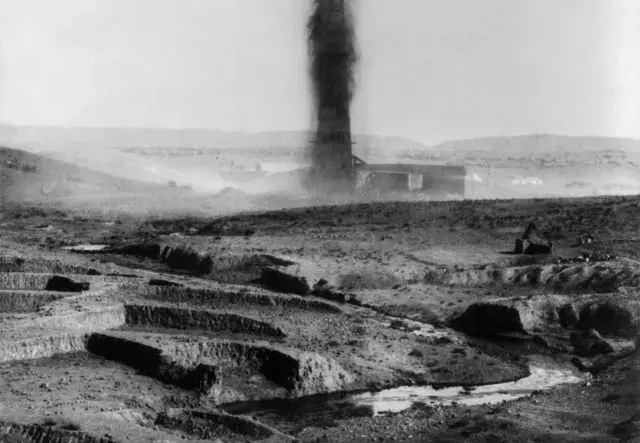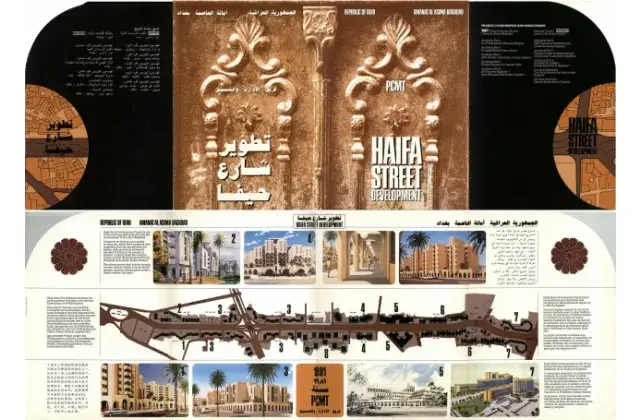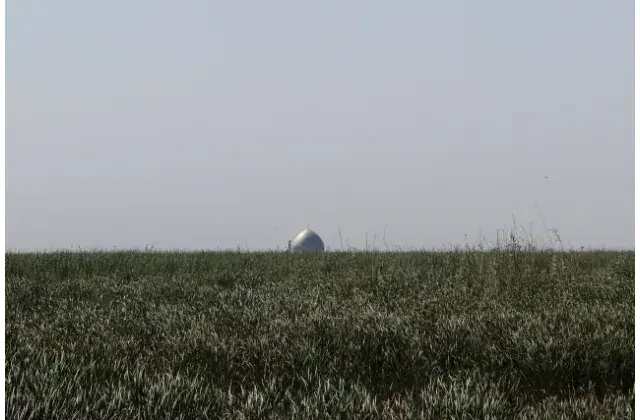Oil - Iraq's Destiny - A Blessing and A Curse (1920 - 2003)

In 1912, competing groups joined forces to form the Turkish Petroleum Company (TPC) with the goal of obtaining a concession to explore for oil in Iraq. The TPC was created to unite rival interests and to outmanoeuvre American competitors. Calouste Gulbenkian, an Armenian-British oil tycoon and philanthropist, played a key role in guiding the TPC. He was hired by British banks for his expertise and influence within the Turkish government. Gulbenkian's 5 percent stake in TPC reportedly made him the wealthiest individual in the world for many years, earning him the nickname “Mr. Five Percent.” Gulbenkian made sure that the Mosul oilfield, the world’s richest, ended up on the Iraqi side of the Turkish-Iraqi border (within the British Mandate region), which was ratified with the Mosul Treaty in 1926. In 1927, TPC discovered the first oil field Baba Gurgur near Kirkuk and on 15 October 1927, the first oil was struck. On 31 July 1928, the historic Red Line Agreement was signed. The 1928 agreement between BP, Total, Esso, Royal Dutch-Shell and the US-American newbies Exxon and Mobil, defined the shape of collaboration in this joint venture, with the Turkish Petroleum Company retaining control over the entire former Ottoman Empire in Asia (except Kuwait). Iraq did have ownership of its own oil, but received royalty payments at specified sums per ton. In 1929, the TPC was renamed the Iraq Petroleum Company (IPC) – a somewhat misleading name as it was not Iraqi-owned., In 1934, the world’s first oil pipeline opened going from Kirkuk to al-Hadithah and from there split with pipelines travelling to Tripoli and Haifa. In 1953, the super-giant Rumaila oil field was discovered.
“Mr. Five Per Cent” died in 1955 bequeathing his assets to Calouste Gulbenkian Foundation established in 1956. The foundation inherited his art collection, and also the majority of his investment portfolio and Pandi, the holding company through which Gulbenkian held his famous 5 per cent. Pandi’s Iraqi-based revenues increased dramatically during the 1950s, and the foundation started to undertake its cultural-humanitarian work together with Iraqi governmental bodies. Between 1957 and 1973, the Foundation supported several projects in Baghdad in art, education, health, science and social affairs. These projects included 250 construction grants such as for the National Museum of Modern Art (Gulbenkian Hall) opened in 1962, the sports complex Al Shaab Stadium inaugurated in 1966 and the headquarters of the Iraqi Plastic Artists Society opened in 1966.
After the 1958 revolution, when the Hashemite Monarchy was overthrown and Iraq became a republic, the new government with Abdul Kareem Qasim as Prime Minister performed several reforms. In September 1960, he invited leaders of other oil producing countries to a conference in Baghdad where they formed the intergovernmental Organisation of the Petroleum Exporting Countries (OPEC) in order to coordinate and unify petroleum policies among member countries. The five founding members were Iraq, Iran, Kuwait, Saudi Arabia and Venezuela. In 1961, IPC’s royalties to the state amounted to 27 % of the total national income, 45 % of the government budget and about 90% of foreign exchange expenditure. Since 1958, oil outputs had increased by 60 % while the royalties to Baghdad had only increased by 40 %. Qasim withdrew all unused oil producing areas, which was more than 90 % of the original licence, including the distinguished Rumaila Field in the south, and founded the Iraq National Oil Company (INOC).
In 1969, meanwhile with the Baath Party in power, Iraq signed an Economic and Technical Cooperation Agreement with the Soviet Union. Three years later, in 1972, the North Rumaila oil field was inaugurated, which was developed with the help of the Soviet Union. In the same year, Saddam Hussein nationalised the assets and rights of IPC in 1972 and founded the state-owned Iraq National Oil Company. “Arab oil for the Arabs” was one of the most popular slogans of the Saddam era. While Iraq received approx. 600-700 million USD in royalties from the IPC in 1968 oil revenues from 1973-1979 soared to some 10 billion USD per year. By literally owning the state sector, the top officials of the Baath Party turned over immense sums of money and enriched themselves immensely during the years of the foreign exchange-induced economic boom. In 1980, there were more than 700 dollar (multi)-millionaires living in Iraq.
The war with Iran in the 1980s reduced Iraq’s production and changed the pipeline map. The costs to Iraq’s oil sector were severe: loss in oil sector GDP, destruction of infrastructure and much more. Iraq’s attempts to rebuild its infrastructure were interrupted by the Gulf war in 1991 – the international community joined the US-led Operation Desert Storm against Iraq, and the following UN sanctions further thwarted Iraq’s economic recovery. Because of Saddam Hussein’s reluctance to cooperate on fulfilling the UN sanctions, especially regarding nuclear weapons, a US-led coalition invaded Iraq in 2003. By that time, the Iraqi oil industry was in a deplorable state.
This article was written by Hella Mewis and is licensed under CC BY-NC 4.0.






